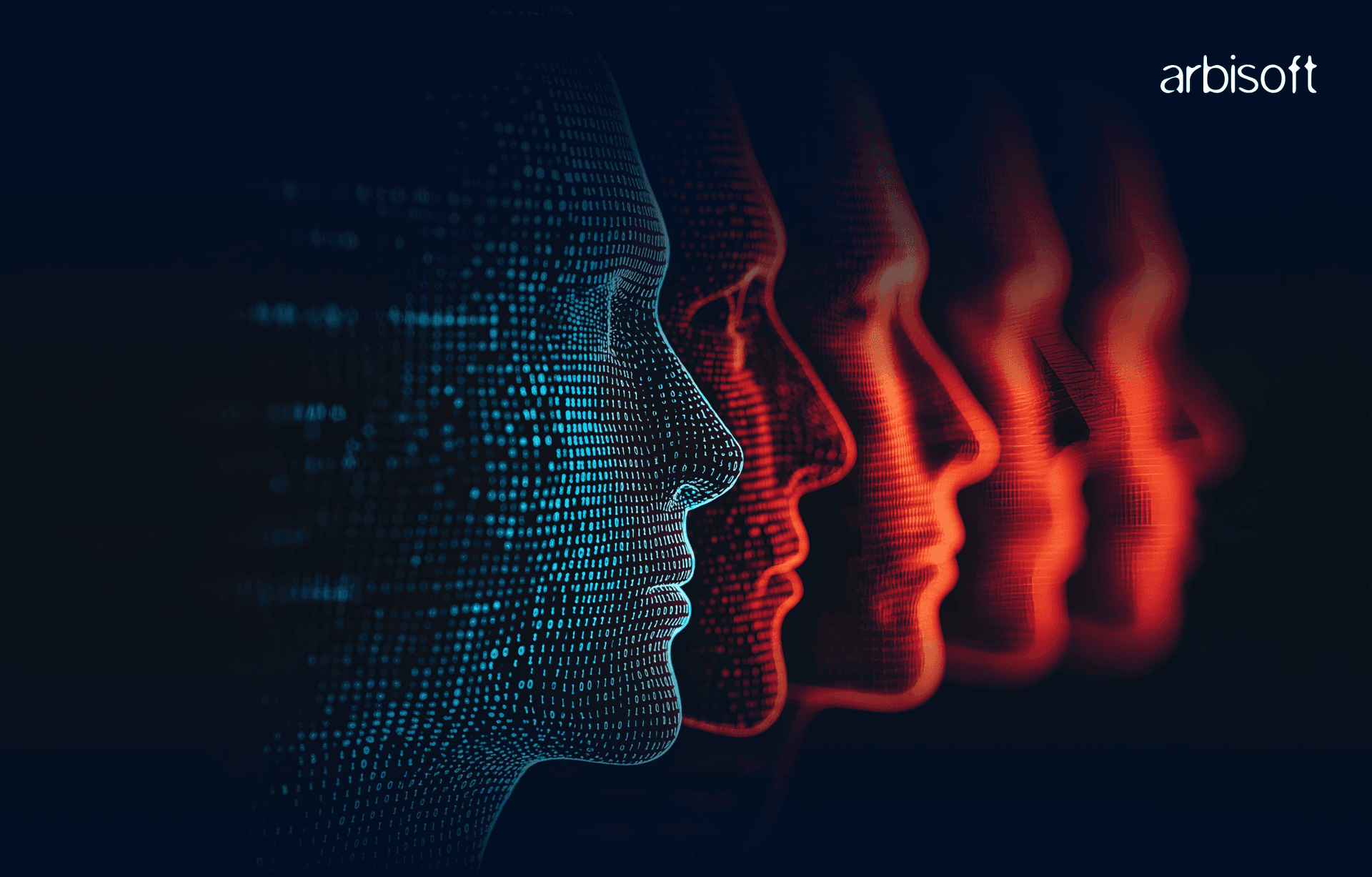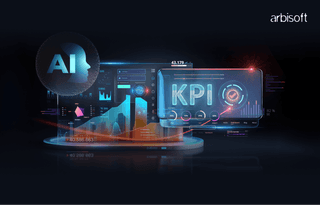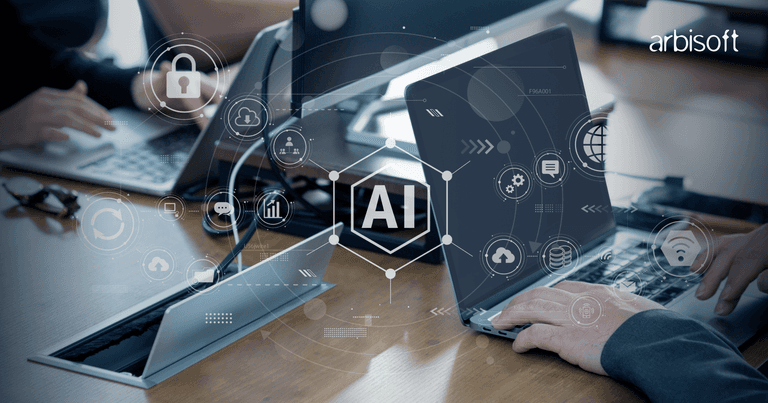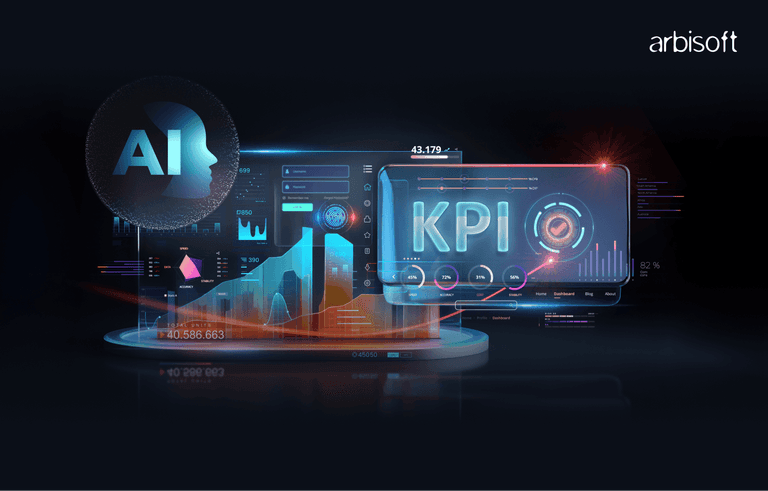We put excellence, value and quality above all - and it shows




A Technology Partnership That Goes Beyond Code

“Arbisoft has been my most trusted technology partner for now over 15 years. Arbisoft has very unique methods of recruiting and training, and the results demonstrate that. They have great teams, great positive attitudes and great communication.”
AI Reasoning Models - The Next Wave of AI That Actually Thinks (Claude 3.7 Leads the Way)

In 2023, an AI assistant could cost a Fortune 500 company $100 million by blindly following flawed data—it regurgitated answers but couldn’t reason why they were wrong. Today, a new breed of AI is turning those disasters into breakthroughs.
Hallucinating chatbots? So yesterday! The era of reasoning AI has arrived—systems that don’t just mimic patterns but understand them. In 2025, McKinsey predicts these models will save enterprises $450 billion annually in errors and inefficiencies.
Traditional AI was brilliant at crunching data but clueless about context. Modern reasoning models? They dissect ambiguities, weigh trade-offs, and even debate their own logic chains.
The $15 Trillion AI Reasoning Race
From startups to governments, the rush to adopt reasoning AI is rewriting economies. Google’s Gemini now predicts protein folds 10x faster than 2020’s AlphaFold.
By 2030, AI contribution could be as much as $15.7 trillion, according to a recent report by PwC.
OpenAI’s GPT-4 Turbo negotiates contracts with human-like nuance. But the star? Claude 3.7 Sonnet—a model that doesn’t just answer questions but questions itself.
“Should I respond fast or think deeply?”
“Did that analogy make sense, or did I miss cultural context?”
This is AI that pauses, reflects, and iterates. In beta tests, its “extended reasoning” mode solved 92% of MIT’s engineering ethics case studies (vs. Claude 3’s 74%). Yet, as one user joked, “It writes Shakespearean sonnets about why your Zoom meeting could’ve been an email.” (test it, it’s fun!)
But here’s the twist - Reasoning AI isn’t perfect—it’s very much like humans. It overthinks, hesitates, and sometimes doubts itself. And that’s exactly why it works.
Let's explore every corner of this new direction!
What is AI Reasoning?
AI reasoning allows systems to process information step-by-step using logic, not just recognizing patterns. These models analyze problems and evaluate evidence. It allows us to draw conclusions through structured, logical methods.
Traditional AI vs. Reasoning AI
Traditional AI (Pattern-Based Systems)
How it works: Matches inputs to outputs using statistical correlations.
A perfect example to quote here will be GPT-3.5 generating text based on frequent word pairs.
Limitations:
- Fails with novel scenarios (e.g., misdiagnosing rare diseases).
- Struggles with logic puzzles (e.g., "If John is taller than Alice but shorter than Bob, who’s tallest?").
Reasoning AI (Logic-Driven Systems)
How it works: Combines data with rule-based analysis
Claude 3.7 fits perfectly here as it verifies legal contracts by cross-referencing clauses with jurisdictional laws.
Proven impact:
- Reduces errors in medical diagnosis by 32% (Stanford, 2024).
- Cuts processing time for financial fraud detection by 41% (McKinsey, 2023).
3 Types of AI Reasoning
1. Deductive Reasoning
The model follows clear rules to conclude. It’s similar to solving a math problem with a set formula. This method guarantees a logical outcome when the rules are solid.
2. Inductive Reasoning
Here, the model learns from patterns and examples. It makes generalizations based on observed data. This approach is useful when there's plenty of data, even if no fixed rules exist.
3. Abductive Reasoning
The model makes the best possible inference with incomplete data. It selects the most likely explanation among several possibilities. This type is crucial in situations where information is scarce or uncertain.
Reasoning AI isn’t speculative—it’s operational.
- IBM’s Watson now cross-references patient DNA, drug interactions, and clinical guidelines to personalize treatments.
- JPMorgan’s COIN platform flags contract discrepancies 15x faster than human lawyers.
- Siemens uses abductive reasoning to pinpoint factory defects with 89% fewer false alarms.
Here's how some top models compare:
Model | Best For | Key Capabilities | Tradeoffs / Limits | Benchmark / Data | Use Cases / Industry Impact |
| GPT-4 Turbo (OpenAI) | Rapid content generation, brainstorming | Fast, fluent text generation using probabilistic methods | Struggles with contradictions (e.g., “If X is true, what happens when X is false?”) | 82% accuracy on LSAT logic games | Drafting marketing copy quickly (requires human fact-checking) |
| Claude 3.7 Sonnet (Anthropic) | Hybrid “Fast vs. Deep” responses | Offers dual modes: Fast (0.8-second responses) and Deep (solves 89% of IMO-level math problems) | May overcomplicate simpler queries | 91% accuracy on LSAT logic games | Legal contract analysis, customer support chatbots |
| Gemini Ultra 1.5 (Google) | Real-time multimodal reasoning | Analyzes live video feeds, sensor data, and text simultaneously; strong multilingual support | Resource-intensive in real-time, complex environments | 94% accuracy on dynamic supply chain optimization (MIT, 2025) | Assisting ER doctors by cross-referencing symptoms, lab results, and medical history |
| Mistral-8x22B (Mistral AI) | Cost-effective, high-volume processing | Processes 1M tokens for $0.12 (vs. Claude 3.7’s $0.38); efficient in logical reasoning | Limited context window (32K tokens compared to Gemini’s 1M tokens) | Resolves 92% of manufacturing defect root causes (Siemens case study) | Manufacturing defect analysis and industrial process optimization |
| Grok-2 (xAI) | Rapid research and data analysis | Can analyze 10,000 research papers in 2 minutes, aiding swift information synthesis | Hallucinates 15% more on abstract topics compared to Claude 3.7 | Ability to accelerate tasks such as genomic data analysis and pharmaceutical research | Accelerating drug discovery and large-scale research reviews |
| DeepSeek-R2 (DeepSeek AI) | Open-source coding and development assistance | Matches GPT-4’s coding accuracy at 1/5th the cost; reduces debugging time by 40% in GitHub Copilot trials | Open source may have variable support and community maintenance needs | Comparable coding accuracy to GPT-4, with significant cost savings | Software development, code debugging, and developer productivity enhancements |
| OpenAI o3 Model | Advanced multi-step reasoning and complex chain-of-thought problem-solving | Enhanced reasoning processes, integrated tool use, improved factual accuracy, and multimodal support | Requires high computational resources | Preliminary tests indicate ~95% accuracy on advanced reasoning tasks and ~88% on LSAT-style logic tests | Ideal for scientific research, technical support, legal analysis, and creative content generation |
Key Techniques Behind AI Reasoning
AI reasoning is no longer just about crunching numbers—it’s about thinking smarter.
1. Chain-of-Thought (CoT) Prompting
AI breaks down problems step-by-step, just like humans. For example, instead of jumping to an answer, it explains how it got there. This technique has boosted accuracy in complex tasks by 15-20%, making it a game-changer for industries like healthcare and finance.
2. Tree-of-Thought (ToT) Approach
Think of this as AI brainstorming. Instead of one path, it explores multiple reasoning routes to find the best solution. Early adopters report a 25% improvement in decision-making quality, especially in R&D and strategic planning.
3. Reinforcement Learning with Human Feedback (RLHF)
AI learns from human input to fine-tune its reasoning. This is why models like Claude 3.7 Sonnet feel so intuitive. Companies using RLHF have seen a 30% reduction in errors and faster adoption rates among users.
4. Self-Correction Loops
AI doesn’t just solve problems—it checks its own work. By identifying and fixing mistakes in real-time, self-correcting models have improved reliability by 40%, making them indispensable for mission-critical applications.
5. Multimodal Reasoning
Text + images + data = smarter AI. By combining different data types, AI can understand the context better. For instance, multimodal models have reduced misinterpretations in customer service by 35%, delivering smoother, more accurate interactions.
Claude 3.7 Sonnet - A Special Shoutout!
So Anthropic just launched the first of its kind AI model yet - Claude 3.7 Sonnet. The model boasts hybrid reasoning and groundbreaking long-form output features. On the other side, xAI’s Grok 3 is making bold claims as the "smartest AI ever"—but critics question whether its benchmarks rely on selectively curated data.
Let’s unpack the details below.
Anthropic’s Claude 3.7 Sonnet redefines AI interaction with its dual-mode reasoning system:
- Standard Mode - Delivers lightning-fast answers for everyday queries.
- Extended Thinking Mode - Activates methodical, layered analysis for complex problems.
This hybrid architecture mimics human cognition—seamlessly blending quick, intuitive responses with deliberate, depth-first processing.
Now let’s talk about the strengths and Weaknesses of Claude 3.7 Sonnet
Strengths
- Hybrid Reasoning – Highly adaptable, it provides both instant responses and in-depth, step-by-step analysis.
- Large Output Capacity – Can handle up to 128,000 tokens, making it great for long documents and detailed responses.
- Open Chain-of-Thought – Unlike other models, Claude 3.7 shows its full reasoning process, helping users understand the reasoning behind its response.
Weaknesses
- Higher Costs - Deep thinking uses more tokens, making long tasks expensive.
- Manual Switching - Users must switch modes manually, which slows workflows.
- No Web Access - It can’t browse the web or access real-time data.
- Math Struggles - It’s great at coding but lags in advanced math.
Future of Reasoning Models
In the next 5 to 10 years, reasoning models are set to become even smarter and more human-like. They will likely:
- Generalize Better - Future models might learn to apply knowledge in new situations with fewer errors. Early forecasts predict error rates could drop by up to 40% in complex tasks.
- Integrate Memory - Maybe AI will start remembering past interactions.
- Simulate Emotion? This could be a real breakthrough!
- Enhance Multimodal Skills - Models will definitely continue to combine text, images, and data for richer insights.
But here’s the kicker - It’s still evolving. By 2030, reasoning models could be as common as smartphones—and just as transformative.
Stay curious. Stay updated. Because the AI you use today will look primitive tomorrow.
This leads to the question, “If AI can think like us, what does that mean for how we think about ourselves?”
























